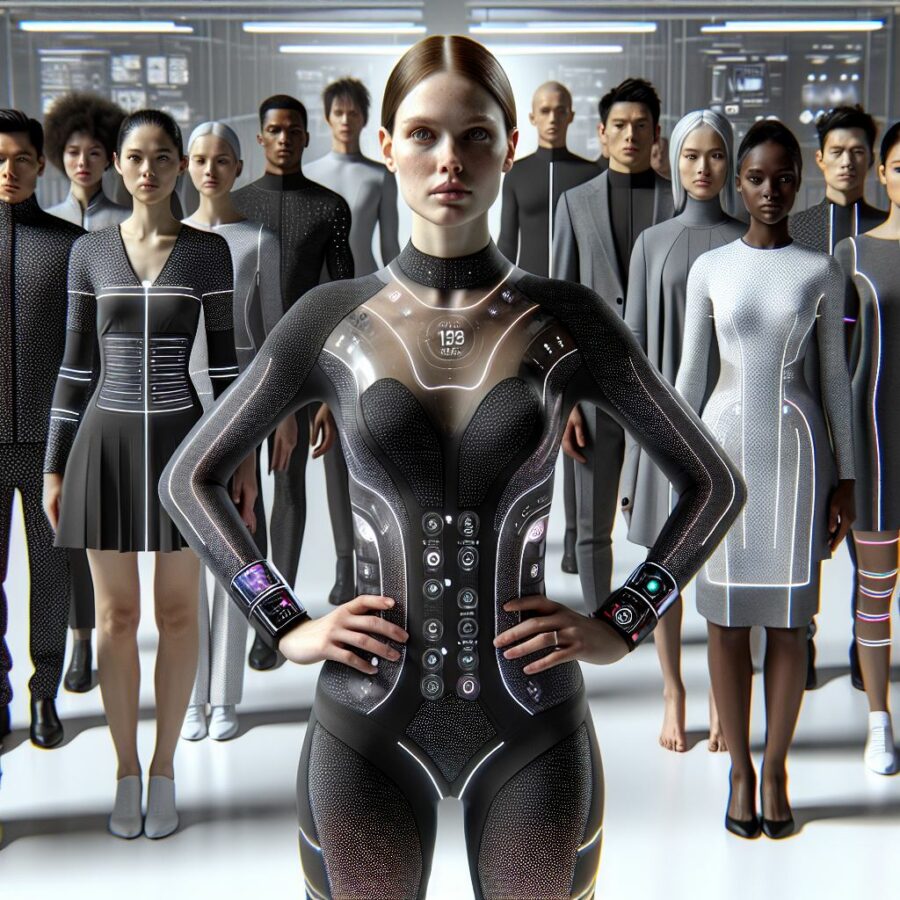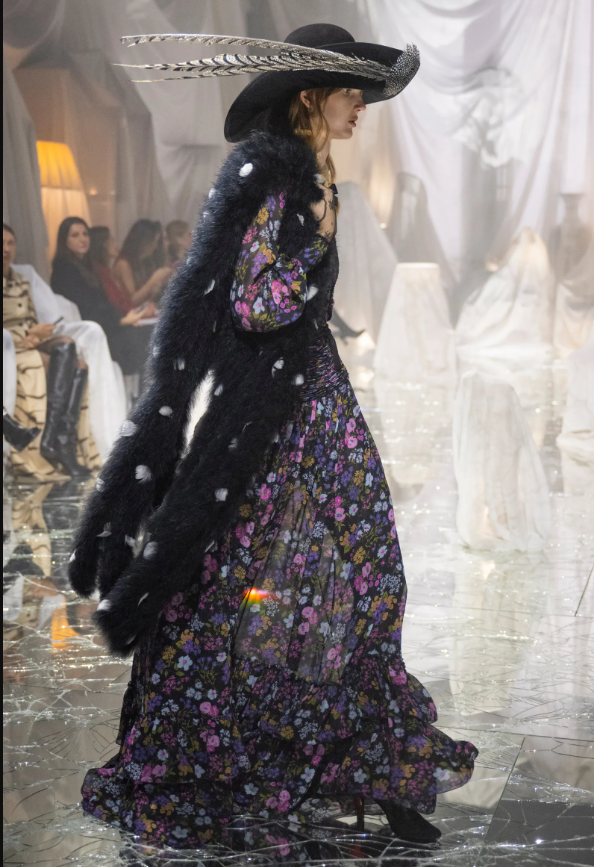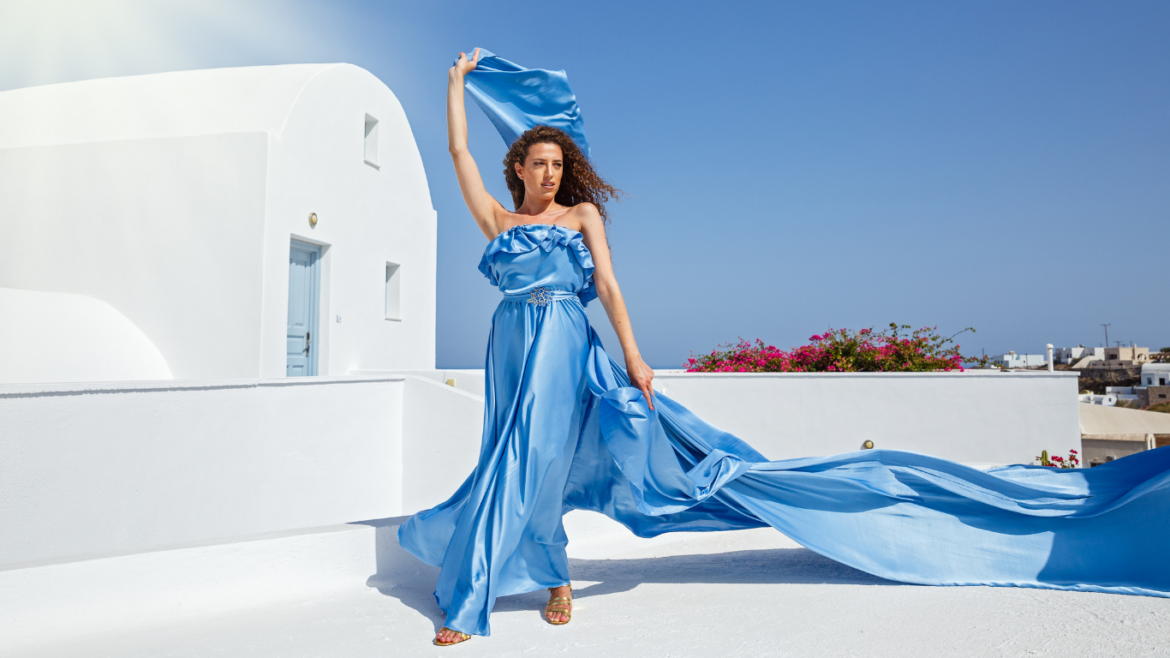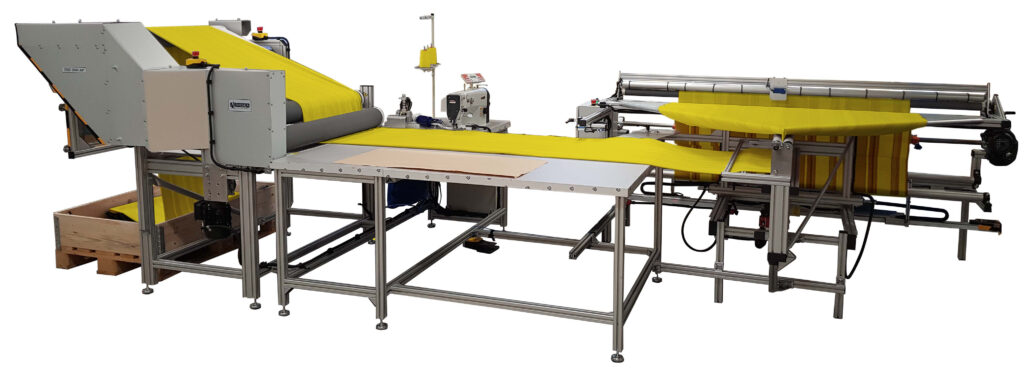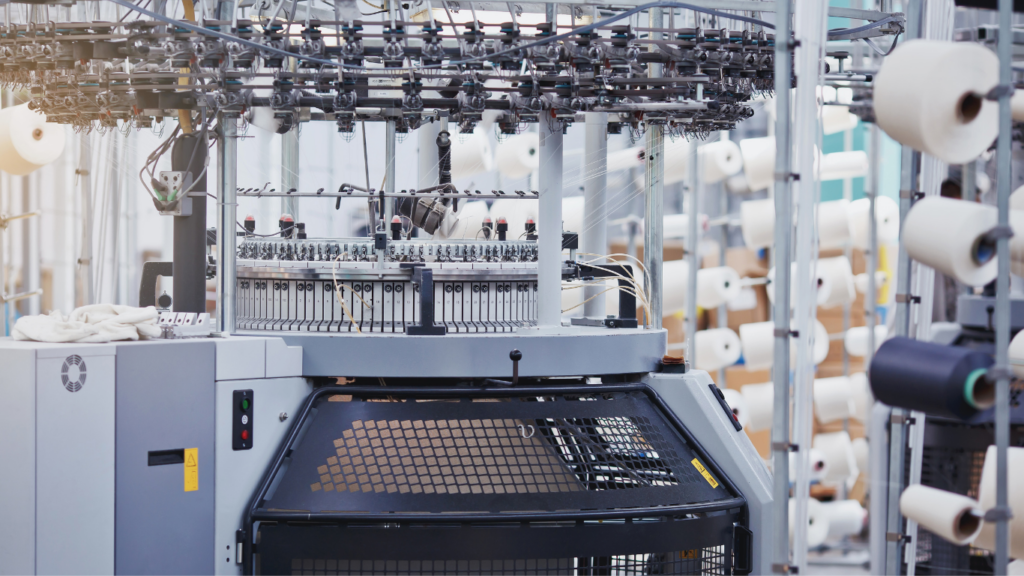Have you ever wondered what goes into creating the luxurious fabrics that grace high-end fashion runways and premium home textiles? The journey from raw material to finished fabric is a fascinating process that combines traditional craftsmanship with cutting-edge technology. In this blog, we’ll uncover the secrets behind high-end fabric production, featuring insights from industry leaders like Svegea of Sweden.
The Foundation: Selecting the Finest Fibers
The first step in fabric production is selecting the highest quality fibers. Whether it’s natural fibers like cotton, silk, and wool, or synthetic fibers such as polyester and nylon, the choice of raw material significantly impacts the final product’s quality. Choose only the finest fibers to craft luxury fabrics that exude durability, softness, and a premium feel.
Spinning Magic: Transforming Fibers into Yarn
Once the fibers are selected, they undergo a spinning process to be transformed into yarn. This step involves drawing out and twisting the fibers to create a continuous thread. Advanced spinning techniques ensure that the yarn is strong and uniform, which is crucial for producing high-quality fabric. Modern spinning machines, like those used by leading manufacturers, offer precision and efficiency, resulting in superior yarn quality.
Weaving Wonders: Crafting the Fabric
Weaving is where the magic truly happens. This process involves interlacing two sets of yarns—the warp and the weft—to create a fabric. The type of weave pattern used can vary, from simple plain weaves to intricate jacquard designs. High-end fabric production often employs state-of-the-art weaving machines that can produce complex patterns with remarkable precision. Companies like Vandewiele Sweden are renowned for their advanced weaving technology, which ensures high-quality fabric production.
Dyeing and Finishing: Adding Color and Texture
After weaving, the fabric undergoes dyeing and finishing processes to achieve the desired color and texture. Dyeing involves immersing the fabric in dye solutions while finishing treatments can include processes like brushing, calendaring, and coating to enhance the fabric’s appearance and performance. Sustainable dyeing practices are becoming increasingly important, with many manufacturers adopting eco-friendly methods to reduce environmental impact.
Cutting-Edge Technology: Svegea of Sweden’s Innovations
Svegea of Sweden is a pioneer in the textile machinery industry, known for its innovative solutions that enhance fabric production efficiency and quality. One of their standout products is the Tubular Knit Slitter TSO 380. This machine revolutionizes the way tubular knit fabrics are processed, offering massive fabric savings and precision cutting. With features like advanced tension control and semi-automatic blade sharpening, the TSO 380 ensures perfect cuts every time, making it an invaluable asset for garment manufacturers.
Quality Control: Ensuring Perfection
Quality control is a critical aspect of high-end fabric production. Each piece of fabric undergoes rigorous inspection to ensure it meets the highest standards. This includes checking for defects, measuring fabric weight and thickness, and testing for colorfastness and durability. Advanced fabric inspection machines, like those from Svegea, play a crucial role in maintaining quality by detecting even the smallest imperfections.
Sustainable Practices: The Future of Fabric Production
Sustainability is at the forefront of modern fabric production. Manufacturers are increasingly adopting eco-friendly practices to minimize their environmental footprint. This includes using organic fibers, reducing water and energy consumption, and recycling waste materials. Svegea of Sweden commits to sustainability by offering machinery that supports greener production methods. Their advanced textile-cutting systems reduce waste, increase efficiency, and contribute to a more sustainable textile industry.
The Role of Innovation in High-End Fabric Production
Innovation is key to staying ahead in the competitive world of high-end fabric production. From automated cutting machines to smart weaving technology, continuous advancements are driving the industry forward. Companies like Svegea are leading the way with their cutting-edge machinery that combines precision, efficiency, and sustainability. By investing in innovative solutions, manufacturers can produce superior fabrics that meet the demands of discerning customers.
Embracing the Future of Fabric Production
The secrets behind high-end fabric production lie in the meticulous selection of fibers, advanced spinning and weaving techniques, and cutting-edge technology. Companies like Svegea of Sweden are at the forefront of this industry, offering innovative solutions that enhance quality and efficiency while promoting sustainability. As the textile industry evolves, embracing these advancements will be crucial for producing the luxurious fabrics that define high-end fashion and home textiles.
Ready to learn more about the latest innovations in fabric production? Contact us to learn more about the range of advanced textile machinery designed to revolutionize your production process.
In the ever-evolving world of textiles, innovation is key to staying ahead. Textile companies that embrace cutting-edge technologies and sustainable practices are leading the way in textile-cutting solutions. Here are ten reasons why these innovative textile companies are at the forefront of the industry.
1. Advanced Cutting Technologies
Innovative textile companies invest in the latest cutting technologies, such as laser cutting and ultrasonic cutting. These methods offer precision and efficiency, reducing waste and improving the quality of the final product. Laser cutting, for example, allows for intricate designs and clean edges, which are essential for high-quality textiles.
2. Automation and Robotics
Automation and robotics have revolutionized the textile industry. Automated cutting machines can work around the clock, increasing productivity and reducing labor costs. Robotics also ensure consistent quality and precision, which is crucial for maintaining high standards in textile production.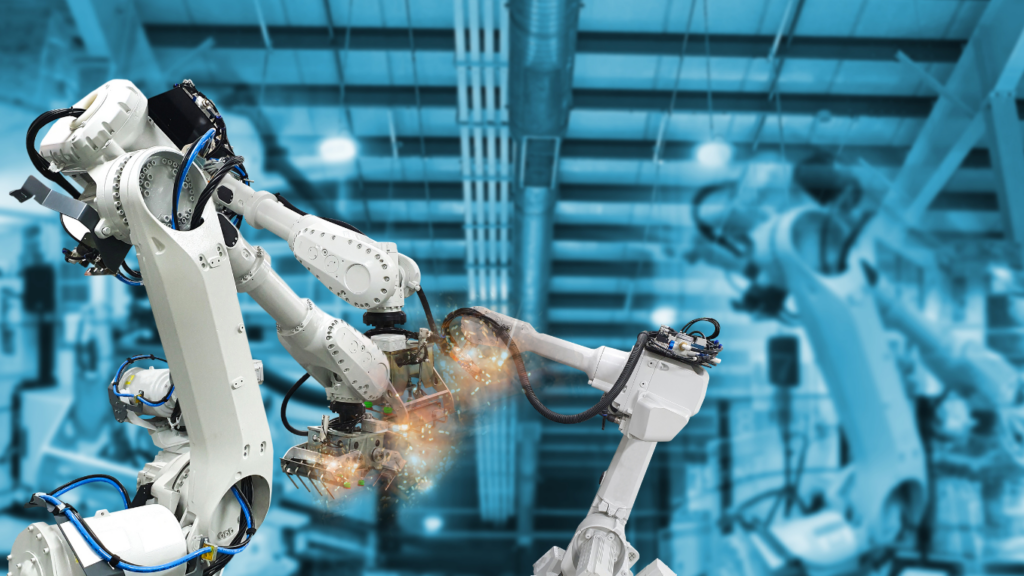
3. Sustainable Practices
Sustainability is a major focus for leading textile companies. They adopt eco-friendly cutting methods that minimize waste and reduce energy consumption. For instance, waterjet cutting uses a high-pressure stream of water to cut textiles, which is both efficient and environmentally friendly.
4. Customization and Flexibility
Innovative textile companies offer customization options to meet the specific needs of their clients. Advanced cutting technologies enable these companies to produce bespoke designs and tailor-made solutions. This flexibility is a significant advantage in a competitive market.
5. Integration of Smart Technologies
The integration of smart technologies, such as IoT and AI, has transformed textile cutting solutions. These technologies enable real-time monitoring and optimization of the cutting process, leading to increased efficiency and reduced downtime. Smart sensors can detect and correct errors, ensuring high-quality output.
6. High-Speed Cutting
Speed is a critical factor in textile production. Leading textile companies use high-speed cutting machines that can handle large volumes of fabric quickly and accurately. This capability is essential for meeting tight deadlines and maintaining a competitive edge.
7. Precision and Accuracy
Precision and accuracy are paramount in textile cutting. Innovative companies use advanced software and cutting tools to achieve precise cuts, reducing material waste and ensuring consistent quality. This attention to detail is what sets them apart from the competition.
8. Cost-Effective Solutions
By adopting advanced cutting technologies and automation, textile companies can reduce production costs. These cost savings can be passed on to customers, making high-quality textiles more affordable. Additionally, efficient cutting processes minimize waste, further reducing costs.
9. Enhanced Safety Measures
Safety is a top priority for leading textile companies. They implement advanced safety features in their cutting machines to protect workers and prevent accidents. For example, laser cutting machines are equipped with safety sensors that automatically shut down the machine if a hazard is detected.
10. Continuous Innovation
The most successful textile companies are those that continuously innovate. They invest in research and development to stay ahead of industry trends and adopt new technologies. This commitment to innovation ensures they remain leaders in textile-cutting solutions.
One such example of continuous innovation is the Svegea CMS 1800A2 Strip Cutter. This versatile machine is renowned for its precision in cutting various types of fabrics into strips, making it ideal for producing bias binding, piping, and other narrow fabric applications. The CMS 1800A2 Strip Cutter exemplifies the advanced cutting technologies and efficiency that set leading textile companies apart.
Innovation At Its Finest
Innovative textile companies are leading the way in textile-cutting solutions by embracing advanced technologies, sustainable practices, and continuous innovation. These companies set the standard for quality, efficiency, and customization in the textile industry. If you’re looking for cutting-edge textile solutions, consider exploring the products offered by Svegea of Sweden. Visit our product page to learn more about our innovative textile-cutting solutions.
As we step into 2025, the textile industry is undergoing significant transformations. From sustainability to smart textiles, the trends this year are set to revolutionize both fashion and home decor. Let’s explore the key textile trends for 2025 and how they are shaping the future of the industry.
Sustainability: The Green Revolution
 Sustainability continues to be a driving force in the textile industry. Consumers are increasingly demanding eco-friendly and ethically sourced materials. This trend is leading to a rise in the use of organic cotton, bamboo, hemp, and Tencel. Brands are also focusing on traceable supply chains and circular fashion, which includes repairable and biodegradable fabrics. This shift towards sustainability is not just a trend but a necessary evolution for the industry.
Sustainability continues to be a driving force in the textile industry. Consumers are increasingly demanding eco-friendly and ethically sourced materials. This trend is leading to a rise in the use of organic cotton, bamboo, hemp, and Tencel. Brands are also focusing on traceable supply chains and circular fashion, which includes repairable and biodegradable fabrics. This shift towards sustainability is not just a trend but a necessary evolution for the industry.
Smart Textiles: The Future is Now
The integration of advanced technology into fabrics is creating smart textiles that can monitor health metrics and regulate temperature. These innovations are set to revolutionize both fashion and home decor. Imagine clothing that can adjust to your body temperature or fabrics that can track your fitness levels. The possibilities are endless, and the future is now.
Digital Printing: Customization at Its Best
Digital printing technology is allowing for more intricate and customizable designs on textiles. This innovation enables brands to produce unique patterns and reduce waste compared to traditional printing methods. With digital printing, the textile industry can offer more personalized products, catering to the individual tastes of consumers.
Textures and Layers: Creating Visual Appeal
Mixing different textures and layers is becoming increasingly popular in home decor. Combining materials like velvet, linen, and wool can create visually appealing and inviting spaces. This trend is all about creating depth and interest in interior design, making homes feel more cozy and luxurious.
Bold Patterns: Making a Statement
Bold and eye-catching patterns are expected to be a major fashion trend in 2025. These patterns add personality and flair to both fashion and home textiles. Whether it’s a striking geometric design or a vibrant floral print, bold patterns are here to make a statement.
Advanced Apparel Manufacturing: Efficiency and Innovation
The use of 3D technologies and automation in apparel manufacturing is increasing efficiency and allowing for more innovative designs. These advancements are streamlining production processes and enabling the creation of complex and unique garments. The future of apparel manufacturing is bright, with technology leading the way.
Customization and Personalization: Meeting Consumer Demands
Consumers are seeking more personalized and customized textile products. This trend is driving brands to offer bespoke designs and tailored solutions. From custom-fit clothing to personalized home decor, the demand for unique and individualized products is on the rise.
AI and Data Analytics: Optimizing the Industry
Artificial intelligence and data analytics are being used to predict trends, optimize supply chains, and enhance the overall efficiency of textile production. These technologies are providing valuable insights that help brands stay ahead of the curve and meet consumer demands more effectively.
Innovation with the Right Tools
Having the right machinery is crucial to keeping up with these dynamic trends. For instance, the Svegea EC 450 XF Collarette Cutting System exemplifies how advanced technology can enhance textile production. Known for its precision and efficiency, this machine supports sustainable practices by minimizing material waste and optimizing resource use. Its versatility makes it a valuable addition to any textile manufacturing setup, aligning perfectly with the industry’s move towards automation and smart textiles.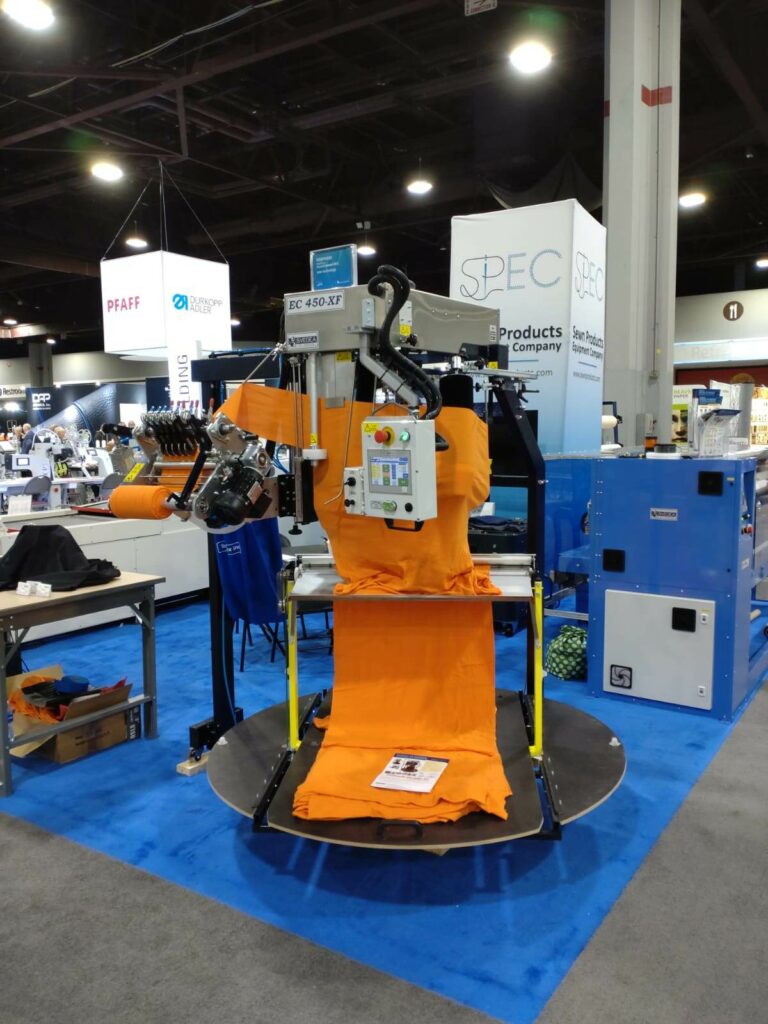
Embrace the Future of Textiles
The textile trends for 2025 highlight the exciting innovations and shifts happening in the industry. From sustainability to smart textiles, these trends are shaping the future of fashion and home decor. As we embrace these changes, staying informed and adapting to the evolving landscape is essential.
Keeping up with these trends requires the right machinery for those in the textile production industry. Contact Svegea of Sweden for all your textile production machinery needs. With its advanced technology and expertise, Svegea can help you stay ahead in this dynamic industry.
Preserving history, one fabric at a time! Discover why textile conservation is crucial to safeguarding the past for future generations.
Textile conservation is a specialized field dedicated to preserving historical fabrics that offer a tangible connection to our past. These textiles aren’t just pieces of cloth; they tell stories of cultures, traditions, and technological advancements. This blog will explore the significance of textile conservation, the techniques involved, and how modern textile machines contribute to this delicate preservation process.
The Importance of Textile Conservation
Historical fabrics offer invaluable insights into social, economic, and cultural histories. Without proper conservation, these artifacts would deteriorate, erasing important chapters of human history. Textile conservation ensures that future generations can continue studying and appreciating these pieces of the past.
Cultural Significance
Textiles often hold deep cultural importance. Traditional garments showcase unique weaving techniques and patterns, offering glimpses into the identities of diverse communities. Preserving these fabrics helps protect cultural heritage, ensuring it remains intact for future generations to learn from.
Educational Value
Historical fabrics serve as powerful educational tools. Researchers and students can study ancient techniques, materials, and designs that have shaped modern innovations in textiles. By conserving these textiles, we preserve this knowledge for future generations to explore.
Techniques in Textile Conservation
Preserving delicate fabrics requires specialized techniques tailored to the fabric’s age, condition, and historical value.
- Cleaning and Stabilization – One of the first steps in textile conservation is gentle cleaning to remove dirt and contaminants. Stabilization follows, reinforcing fragile areas to prevent further damage while maintaining the fabric’s integrity.
- Repair and Restoration – In some cases, conservators repair damaged textiles, ensuring that repairs are as discreet as possible. Restoration work aims to return the fabric to its original appearance, allowing it to tell its full story while maintaining authenticity.
The Role of Textile Machines
Modern textile machines play a pivotal role in helping conservators perform these intricate tasks with precision.
- Advanced Weaving Machines – These machines can replicate historical weaving techniques, making it easier to create seamless patches that blend with the original fabric. This ensures that repairs remain nearly invisible, preserving the authenticity of the textile.
- Cleaning and Drying Equipment – Specialized cleaning and drying machines help protect fragile fabrics by providing a controlled environment. These machines ensure that delicate textiles are handled with care during every step of the cleaning process.
Svegea of Sweden: Precision Machines for Conservation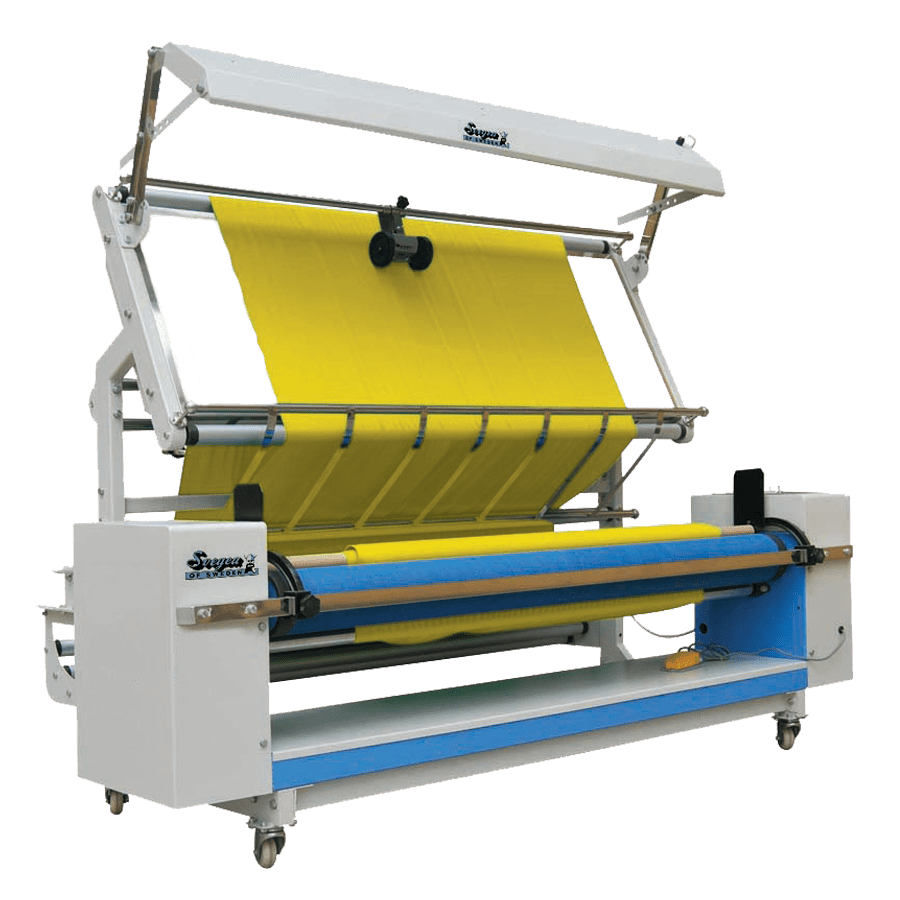
Svegea of Sweden provides advanced textile machines that play a vital role in modern textile manufacturing and quality control. Their equipment, including the Fabric Inspection Machine CMI 180, is designed for precision and delicate handling, ensuring high-quality fabrics. While primarily used for quality control, these machines support the broader textile industry, which includes conservation efforts by ensuring that only the best materials are used in preservation projects.
Case Studies in Textile Conservation
Several high-profile conservation projects highlight the importance and success of textile conservation:
- The Bayeux Tapestry: An 11th-century masterpiece, the Bayeux Tapestry underwent meticulous cleaning and stabilization, preserving it for generations to come.
- The Shroud of Turin: This significant religious artifact benefited from advanced textile conservation techniques, ensuring its continued preservation.
Challenges in Textile Conservation
Textile conservation faces several challenges, including the fragility of fabrics and environmental threats such as humidity, light, and temperature.
Fabric Fragility
Handling fragile textiles requires expert knowledge and specialized equipment to avoid causing further damage during the conservation process.
Environmental Factors
Conservators must constantly manage factors such as humidity and light exposure, which can accelerate the deterioration of historical fabrics. Controlled environments are essential for long-term preservation.
The Future of Textile Conservation
Technological advancements and growing awareness promise a bright future for textile conservation.
Technological Innovations
Cutting-edge technologies like 3D scanning and digital imaging allow conservators to analyze fabrics in unprecedented detail. These innovations are transforming preservation techniques, enabling conservators to develop more effective methods.
Increased Awareness
Growing public and institutional awareness of the importance of textile conservation has led to increased funding and support for preservation projects. As more people understand the value of preserving these historical fabrics, the future of textile conservation looks bright.
Preserving Cultural Heritage
Textile conservation is essential for preserving our cultural heritage and ensuring future generations have access to these invaluable artifacts. By using advanced techniques and modern machines like those from Svegea of Sweden, conservators can safeguard these fabrics for years to come. As we continue to innovate and raise awareness, textile conservation will thrive, preserving history—one fabric at a time.
For expert textile machines, contact Svegea of Sweden for precision solutions tailored to your conservation needs.
Choosing the right textile machinery can be a daunting task, especially with the plethora of options available in the market. The decision impacts your production efficiency, product quality, and overall business profitability. Here are some key tips to help you navigate this critical process.
1. Understand Your Production Needs
Before investing in textile machinery, it’s crucial to understand your specific production needs. Different types of machinery serve various purposes, from weaving and knitting to dyeing and finishing. Determine the scale of your operations, the types of textiles you produce, and your production goals. This understanding will guide your choice of machinery that best suits your requirements.
2. Evaluate Technology and Features
Modern textile machinery comes with a range of advanced technologies and features designed to enhance productivity and quality. Look for machines that offer automation, precision control, and energy efficiency. For instance, Svegea of Sweden offers cutting-edge machinery equipped with the latest technology, ensuring high efficiency and minimal waste. Our products are known for their durability and innovative features.
3. Consider Quality and Reliability
Quality and reliability are paramount when choosing textile machinery. Investing in high-quality machines may come with a higher initial cost, but it ensures long-term performance and fewer breakdowns. Research and compare different brands, read reviews, and consider the manufacturer’s reputation. Modesty aside, our brand has a proven track record of producing reliable and high-quality textile machinery.
4. Assess After-Sales Support and Maintenance
After-sales support and maintenance services are crucial for the smooth operation of textile machinery. Ensure that the manufacturer offers comprehensive support, including installation, training, and regular maintenance services. We provide excellent customer support and maintenance services, ensuring that your machinery operates optimally.
5. Analyze Cost and Return on Investment (ROI)
While the cost of textile machinery is a significant factor, it’s essential to consider the return on investment (ROI). A more expensive machine with advanced features and higher efficiency can lead to cost savings in the long run. Calculate the total cost of ownership, including maintenance and operational costs, and compare it with the expected benefits. Opt for machines that offer the best value for money.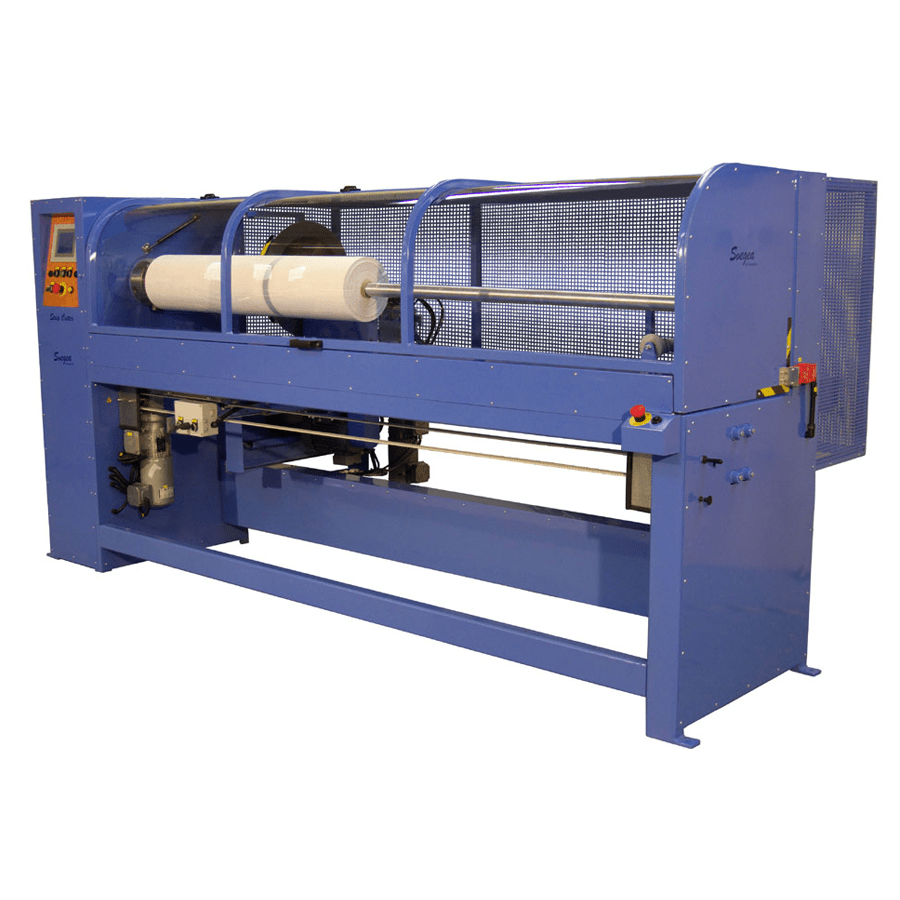
6. Environmental Considerations
Sustainability is a growing concern in the textile industry. Choose machinery that is energy-efficient and environmentally friendly. Machines that reduce water and chemical usage, minimize waste, and consume less energy are ideal. This Swedish textile company is known for producing sustainable textile machinery that aligns with eco-friendly production practices.
7. Compatibility with Existing Systems
Ensure that the new machinery is compatible with your existing systems and processes. Incompatibility can lead to production delays and additional costs. Consult with the manufacturer or a technical expert to evaluate the integration process. A company that offers flexible machinery solutions that can be seamlessly integrated into various production setups, should be the right choice.
Explore Svegea of Sweden’s Textile Machinery
Choosing the right textile machinery is a critical decision that impacts your production efficiency and product quality. By considering factors such as your production needs, technology and features, quality, after-sales support, cost, environmental impact, and compatibility, you can make an informed choice. Svegea of Sweden’s innovative machinery solutions are designed to meet diverse production requirements while ensuring high efficiency and sustainability.
Curious about how we can elevate your textile production process? Visit our product page for more information and start your journey towards optimal textile production today.
Ever wondered how fabrics impact your mood? The textures of the textiles we surround ourselves with can significantly influence our emotions and behavior. This article delves into the fascinating psychology of fabric textures and how they can shape our daily experiences.
The Power of Fabric Textures
Fabric texture refers to the surface quality of a fabric, which can be smooth, rough, soft, or stiff. Different textures evoke different emotional responses.
Smooth Textures: Fabrics like silk, satin, and cotton have smooth textures. These materials are often associated with luxury and comfort. Wearing smooth fabrics can make you feel more relaxed, elegant, and confident. They’re perfect for special occasions or when you want to pamper yourself.
Rough Textures: Fabrics like wool and raw silk are examples of rough textures. These materials can evoke feelings of ruggedness, durability, and strength. Wearing rough-textured fabrics can make you feel more grounded and resilient. They’re great for casual, everyday wear or outdoor activities.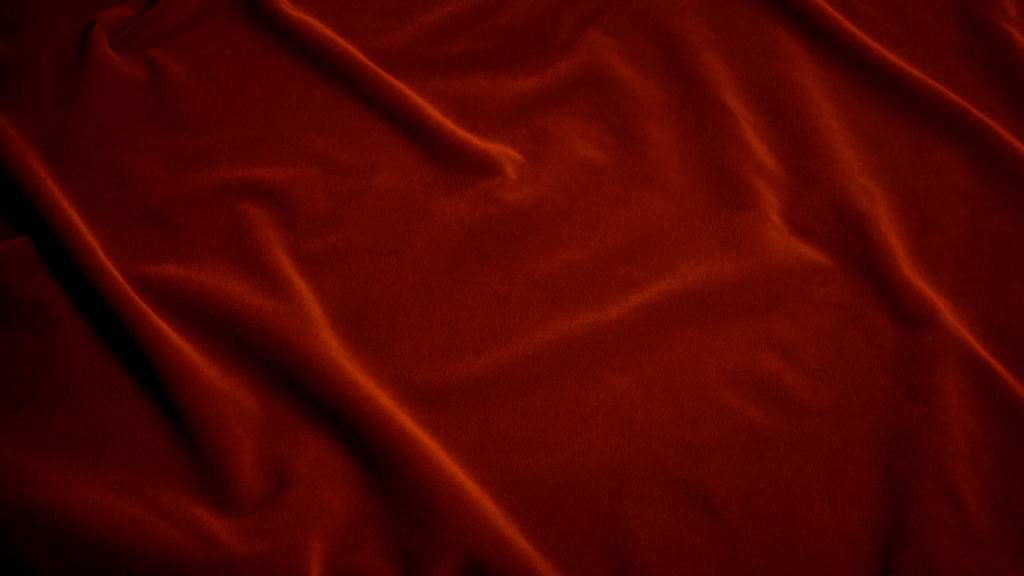
Soft Textures: Fabrics such as velvet are incredibly soft. These fabrics are associated with warmth, comfort, and nurturing. Wearing soft, textured fabrics can make you feel cozy and secure, making them ideal for relaxing at home or during the colder months.
Stiff Textures: Fabrics like organza have a stiff texture. These fabrics often convey formality and structure. Wearing stiff fabrics can make you feel more disciplined and poised. They’re suitable for formal events or professional settings. 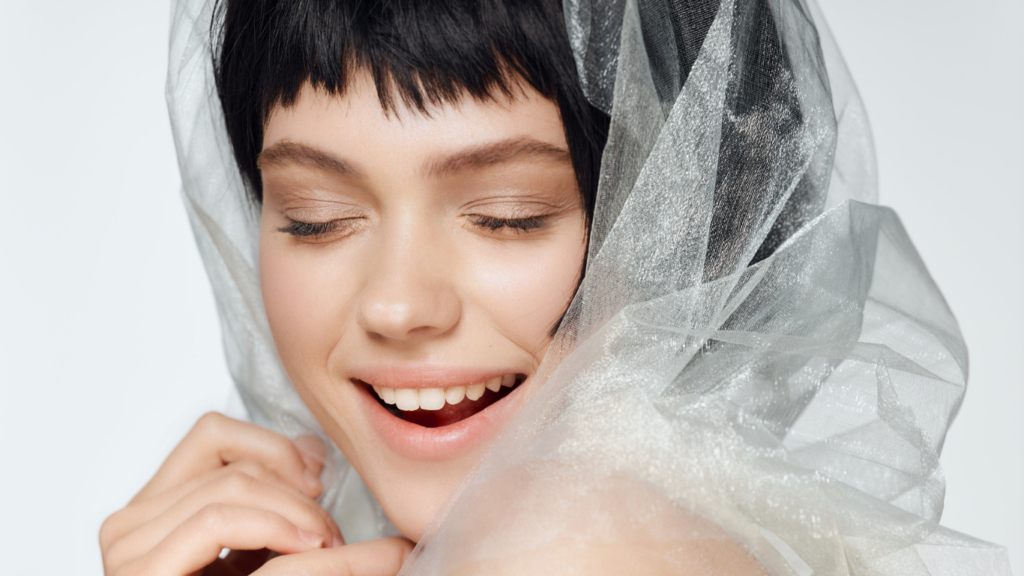
The Influence of Fabric Colors
Colors are powerful psychological tools that can influence our emotions and perceptions. Different colors can have varying effects on our mood.
Red: Red is a bold and stimulating color. It is often associated with passion, energy, and excitement. Wearing red can make you feel more confident and assertive. It’s a great choice for events where you want to stand out and make a strong impression.
Blue: Blue is a calming and soothing color, often linked to feelings of tranquility, trust, and stability. Wearing blue can help you feel more relaxed and at peace. It’s ideal for situations where you need to stay calm and composed, such as job interviews or exams.
Yellow: Yellow is a bright and cheerful color. It is associated with happiness, optimism, and creativity. Wearing yellow can lift your spirits and make you feel more joyful and energetic. It’s perfect for social gatherings or creative endeavors.
Green: Green is a refreshing and harmonious color. It represents nature, balance, and growth. Wearing green can make you feel more refreshed and rejuvenated.
Combining Textures and Colors
The combination of textures and colors can create a powerful impact on your mood and behavior. For instance, a smooth, blue silk dress can make you feel both elegant and calm, while a rough, red wool sweater can evoke feelings of strength and confidence. Understanding how these elements work together can help you make more informed choices about your wardrobe and home decor.
Svegea of Sweden: Innovating Textile Machinery
Svegea of Sweden is at the forefront of textile machinery innovation. Their advanced fabric-cutting machines ensure precision and efficiency, making it easier for designers to create garments that not only look good but also feel good. By investing in high-quality machinery from Svegea, manufacturers can produce textiles that meet the psychological needs of their customers.
Svegea leads the textile industry with its quality and innovation. Their machines cut various fabrics with utmost precision. This attention to detail helps create garments that provide the desired emotional and psychological benefits to the wearer.
A Fascinating Field
The psychology of fabric is a fascinating field that highlights the significant impact that textures and colors can have on our moods and behavior. By understanding these effects, we can make more informed choices about the fabrics we wear and surround ourselves with. Whether you’re looking to feel more confident, relaxed, or joyful, the right fabric can make all the difference.
For manufacturers and designers, investing in high-quality textile machinery from Svegea of Sweden can help ensure that your products meet the psychological needs of your customers. To learn more about Svegea’s innovative solutions, visit their contact page.
Explore the world of fabrics and discover how the textures and colors you choose can transform your mood and behavior. Make informed choices and experience the psychological benefits of the right textiles today!
In the dynamic world of textile manufacturing, automation is a cornerstone of innovation, driving unprecedented efficiency, precision, and sustainability. As an expert with over two decades of experience in textile automation, we have witnessed firsthand the transformative power of these technologies. Today, we’ll explore how automation is reshaping the fabric of our industry.
The Evolution of Textile Automation
The journey from hand-spun fibers to today’s high-tech production lines tells a story of relentless innovation. Early mechanization during the Industrial Revolution laid the groundwork, but modern automation has catapulted us into a new era of manufacturing excellence.
Key milestones include:
1. 1960s-1970s: Introduction of computer-controlled looms
2. 1980s-1990s: Development of robotic systems for material handling
3. 2000s-2010s: Integration of AI and machine learning in quality control
4. 2020s and beyond: Emergence of fully automated, smart textile factories
Core Areas Transformed by Automation
Spinning: Precision at Lightning Speeds
Modern spinning systems, such as rotor and air-jet technologies, have revolutionized yarn production. These systems can produce yarn up to 20 times faster than traditional ring spinning, with unparalleled consistency.
Weaving: Intelligent Looms for Flawless Fabrics
Today’s computerized looms are marvels of engineering. There are machines for example that use real-time adaptive tension control to adjust warp tension on the fly, ensuring fabric quality remains consistent even as conditions change during production. This level of precision was unthinkable just a decade ago.
Dyeing and Finishing: Sustainability Meets Efficiency
Automated dyeing and finishing processes have dramatically reduced water and energy consumption while improving color consistency. Digital textile printing, exemplified by machines can print complex designs directly onto fabric at up to 1,000 m²/hour, revolutionizing small-batch and customized production.
Spotlight on Innovation: Svegea’s EC 450 XF Collarette Cutting System
The EC 450 XF Collarette Cutting System by Svegea represents the cutting edge of textile automation. As the winner of the Texprocess Americas 2023 Innovation Award, this system exemplifies how targeted automation can solve specific industry challenges.
Key features include:
– Multi-material compatibility for unparalleled versatility
– Precision cutting with minimal waste
– Rapid changeover times, boosting overall productivity
The EC 450 XF doesn’t just cut fabric; it redefines efficiency in garment manufacturing. For manufacturers looking to stay competitive, systems like this are not just beneficial—they’re essential.
The Tangible Benefits of Automation
1. Quality Assurance: Automated systems consistently produce high-quality textiles, reducing defects by up to 90% compared to manual processes.
2. Increased Productivity: Modern automated lines can operate 24/7, increasing output by 200-300% over traditional methods.
3. Cost Reduction: While initial investment is significant, automated systems can reduce labor costs by 40-60% and material waste by 20-30% over their lifetime.
4. Customization at Scale: Automation enables quick changeovers, making small-batch and customized production economically viable.
5. Enhanced Safety: Automation minimizes human exposure to hazardous processes, reducing workplace accidents by up to 80% in some facilities.
Overcoming Implementation Challenges
While the benefits of automation are clear, implementation comes with challenges:
1. Initial Investment: The upfront cost of automation can be substantial. However, ROI typically occurs within 2-5 years, depending on the scale of implementation.
2. Workforce Transition: Shifting to automated systems requires retraining staff. Forward-thinking companies are investing in upskilling programs to transition workers into higher-value roles.
3. System Integration: Ensuring new automated systems work seamlessly with existing processes is crucial. Careful planning and phased implementation can mitigate disruptions.
The Future of Textile Automation
Looking ahead, several trends will shape the future of textile automation:
1. AI and Machine Learning: These technologies will enable predictive maintenance and real-time quality control, further improving efficiency and reducing downtime.
2. Internet of Things (IoT): Connected devices will create smart factories where every aspect of production is monitored and optimized in real-time.
3. Sustainable Automation: Future systems will focus even more on reducing environmental impact, with closed-loop water systems and energy-efficient processes.
4. Collaborative Robotics: Cobots will work alongside humans, handling repetitive tasks while allowing human workers to focus on high-value activities.
Embracing the Automated Future
Automation in textile manufacturing isn’t just about replacing human labor—it’s about augmenting human capabilities, driving innovation, and creating a more sustainable, efficient industry. As we look to the future, it’s clear that automation will play an increasingly central role in shaping the textiles of tomorrow.
For manufacturers, the message is clear: embrace automation or risk being left behind. The future of textiles is automated, and that future is now.
To explore cutting-edge automation solutions like Svegea’s EC 450 XF Collarette Cutting System, contact us now! For those ready to take the next step in their automation journey, now is the time to act.
The textile manufacturing industry is undergoing a significant transformation. As we move into 2025, several trends are shaping the future of this dynamic sector. From sustainable practices to advanced technologies, the landscape is evolving rapidly. Let’s explore the top trends in textile manufacturing for 2024 and 2025.
1. Sustainable Practices
Sustainability is no longer a buzzword; it’s a necessity. Textile manufacturers are increasingly adopting eco-friendly practices to reduce their environmental footprint. This includes using organic materials, recycling waste, and implementing energy-efficient processes. According to the World Economic Forum, sustainable practices in textile manufacturing can significantly reduce carbon emissions and water usage.
2. Advanced Technologies
The integration of advanced technologies is revolutionizing textile manufacturing. Automation, artificial intelligence (AI), and the Internet of Things (IoT) are enhancing efficiency and productivity. For instance, AI-driven machines can predict maintenance needs, reducing downtime and increasing output. The International Textile Manufacturers Federation highlights that these technologies are crucial for staying competitive in the global market.
3. Customization and Personalization
Consumers today demand unique and personalized products. Textile manufacturers are leveraging digital printing and other technologies to offer customized solutions. This trend is particularly evident in the fashion industry, where personalized clothing is gaining popularity. A report by McKinsey & Company suggests that customization will be a key driver of growth in the textile sector.
4. Smart Textiles
Smart textiles, also known as e-textiles, are gaining traction. These textiles have embedded sensors and electronics that can monitor health, track fitness, and even change color. The potential applications are vast, ranging from healthcare to sportswear. According to TechCrunch, the smart textiles market is expected to grow exponentially in the coming years.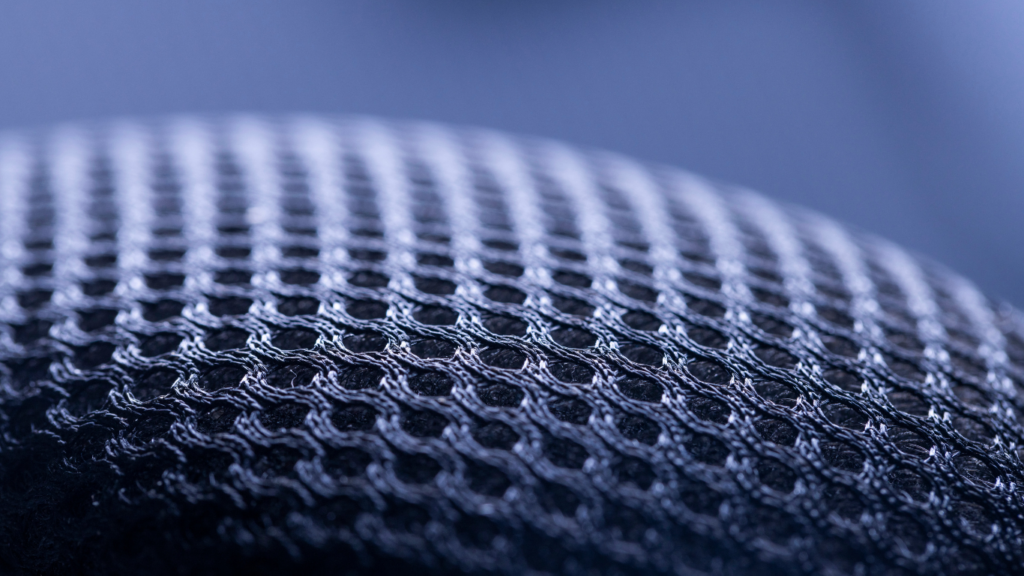
5. Ethical Labor Practices
Consumers are becoming more conscious of the ethical implications of their purchases. As a result, textile manufacturers are focusing on fair labor practices and ensuring safe working conditions. This shift is not only ethical but also beneficial for brand reputation. The Fair Labor Association provides guidelines and resources for companies aiming to improve their labor practices.
Spotlight on Svegea of Sweden
Svegea of Sweden is a notable player in the textile manufacturing industry. Known for their innovative solutions, Svegea offers advanced slitting and cutting machines that enhance efficiency and precision. Their commitment to quality and sustainability sets them apart in the market. While not overtly promotional, it’s worth noting how companies like Svegea are contributing to the industry’s evolution.
Exciting Changes
The textile manufacturing industry is poised for exciting changes in 2025. From sustainable practices to advanced technologies, the trends shaping this sector are both innovative and impactful. By staying informed and adapting to these trends, manufacturers can thrive in a competitive landscape.
For innovative and sustainable textile machinery, contact Svegea of Sweden. Our advanced solutions can help you stay ahead in the evolving textile industry.
In an era where sustainability is paramount, the circular economy offers a transformative approach to how we produce and consume goods. Central to this concept are closed-loop systems and circular design, both of which aim to minimize waste and make the most of our resources.
Understanding Closed-Loop Systems
Closed-loop systems are designed to create a continuous cycle of use and reuse, effectively reducing waste. In these systems, the output of one process becomes the input for another, ensuring that materials are constantly recycled and repurposed. This approach not only conserves resources but also significantly reduces environmental impact.
The Importance of Circular Design
The circular design is a key element of the circular economy. It involves designing products with their entire lifecycle in mind, from creation to disposal. Circular design focuses on durability, reparability, and recyclability, making products easy to disassemble and reuse. This process reduces the need for new raw materials and minimizes waste.
Strategies for Minimizing Waste
Minimizing waste is a fundamental goal of the circular economy. This process is achievable through various strategies, including:
- Design for Longevity: Creating products that last longer and are easily repairable.
- Material Innovation: Using materials that are easier to recycle and have a lower environmental impact.
- Efficient Manufacturing: Implementing processes that reduce waste and improve resource efficiency.
Real-World Applications
Many companies are now adopting circular principles to enhance sustainability. For instance, in the textile industry, some manufacturers are focusing on producing high-quality trim that aligns with circular design principles. By ensuring that their products are durable and recyclable, these companies contribute to a more sustainable future.
The Benefits of a Circular Economy
The shift towards a circular economy offers numerous benefits:
- Environmental Sustainability: By reducing waste and conserving resources, the circular economy helps protect the environment.
- Economic Efficiency: Reusing materials and improving efficiency can lead to cost savings for businesses.
- Innovation and Growth: The circular economy encourages innovation, leading to new business opportunities and economic growth.
Representing a Significant Shift
The circular economy represents a significant shift in how we think about production and consumption. By embracing closed-loop systems and circular design, we can minimize waste and make better use of our resources. This approach not only benefits the environment but also offers economic advantages.
Sustainable Textile Manufacturing
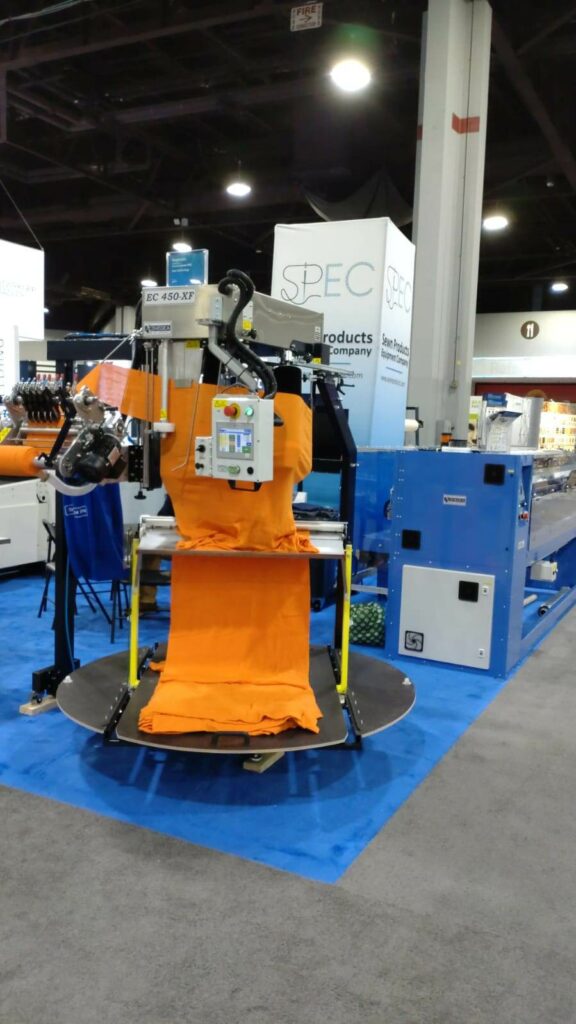 Svegea of Sweden is leading the way in sustainable textile manufacturing with their EC 450 XF Collarette Cutting System. This innovative machine exemplifies circular economy principles by ensuring precision cutting, which minimizes material waste. Its versatility allows it to handle various fabrics and applications, making it an essential tool for manufacturers committed to sustainability. The EC 450 XF boosts energy efficiency, cuts power consumption, and aligns with global sustainability goals. By integrating such advanced technology, Svegea is making significant strides toward a more sustainable future in the textile industry.
Svegea of Sweden is leading the way in sustainable textile manufacturing with their EC 450 XF Collarette Cutting System. This innovative machine exemplifies circular economy principles by ensuring precision cutting, which minimizes material waste. Its versatility allows it to handle various fabrics and applications, making it an essential tool for manufacturers committed to sustainability. The EC 450 XF boosts energy efficiency, cuts power consumption, and aligns with global sustainability goals. By integrating such advanced technology, Svegea is making significant strides toward a more sustainable future in the textile industry.
To learn more about how quality trim can align with circular principles, visit Svegea’s contact page and discover their commitment to sustainability.
Smart textiles, also known as electronic or e-textiles, represent a groundbreaking fusion of fashion and technology. These textiles go beyond mere wearability; they are programmable, interactive, and functional. In this article, we’ll explore what smart fabrics are, provide real-life examples, and discuss their future implications.
What Are Smart Materials?
Also called intelligent or responsive materials, these types of fabrics automatically respond to external stimuli such as temperature changes, light, pressure, or electric fields. Unlike traditional materials with static properties, interactive materials can adapt and change their properties based on environmental conditions. For instance:
– Piezoelectric materials generate voltage when pressure is applied.
– Shape memory alloys return to their original form after deformation.
– Thermochromic materials change color with temperature variations.
Enter Smart Fabrics
A subset of smart materials, these special fabrics embed digital components directly into textiles. These fabrics can:
- Conduct electricity
- React to environmental changes
- Gather and transmit data
- Incorporate embedded LED lights
Examples of Intelligent Fabrics
1. Thermochromic Fabrics: These fabrics change color in response to temperature variations, finding applications in fashion and safety gear.
2. Conductive Fabrics: Embedded with conductive threads, these fabrics transmit electrical signals and are used in wearable electronics.
3. Self-Healing Fabrics: Developed with materials that repair themselves after being punctured or torn.
Cutting-Edge Innovations
Researchers at Cambridge University have woven a 46-inch textile display loaded with LEDs, sensors, and energy storage. This e-textile can display different images or colors based on input from fiber-based devices like light, touch, and temperature sensors. The textile’s multi-functionality and compatibility with existing industrial manufacturing processes make it truly unique.
Image Source: https://www.cam.ac.uk/research/news/scientists-develop-fully-woven-smart-display
Healthcare and Beyond
Responsive fabrics embedded with sensors could transform everyday clothing into interactive devices. Imagine garments that track health metrics or provide real-time environmental feedback.
Tech textiles are more than just fabrics; they’re a canvas for innovation, bridging the gap between style and functionality. As technology advances, we can expect even more exciting developments in this field.
Remember, the future of fashion isn’t just about what you wear—it’s about what your clothes can do for you!





